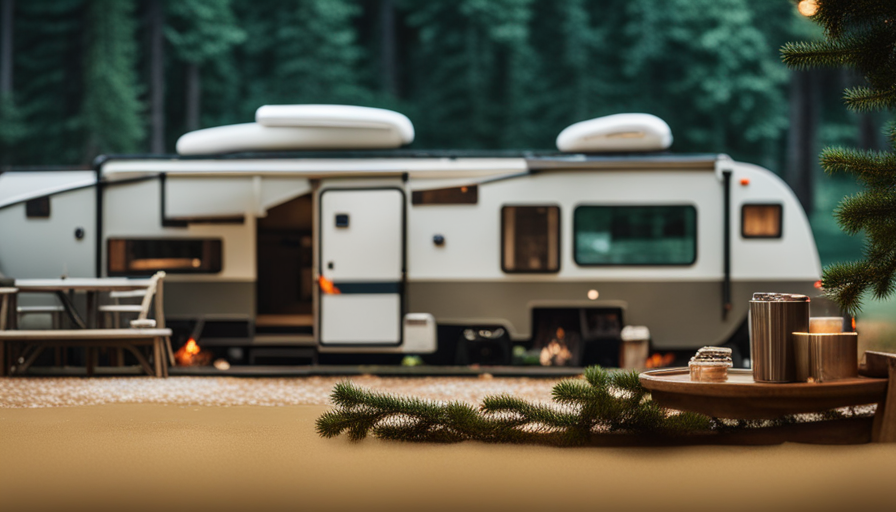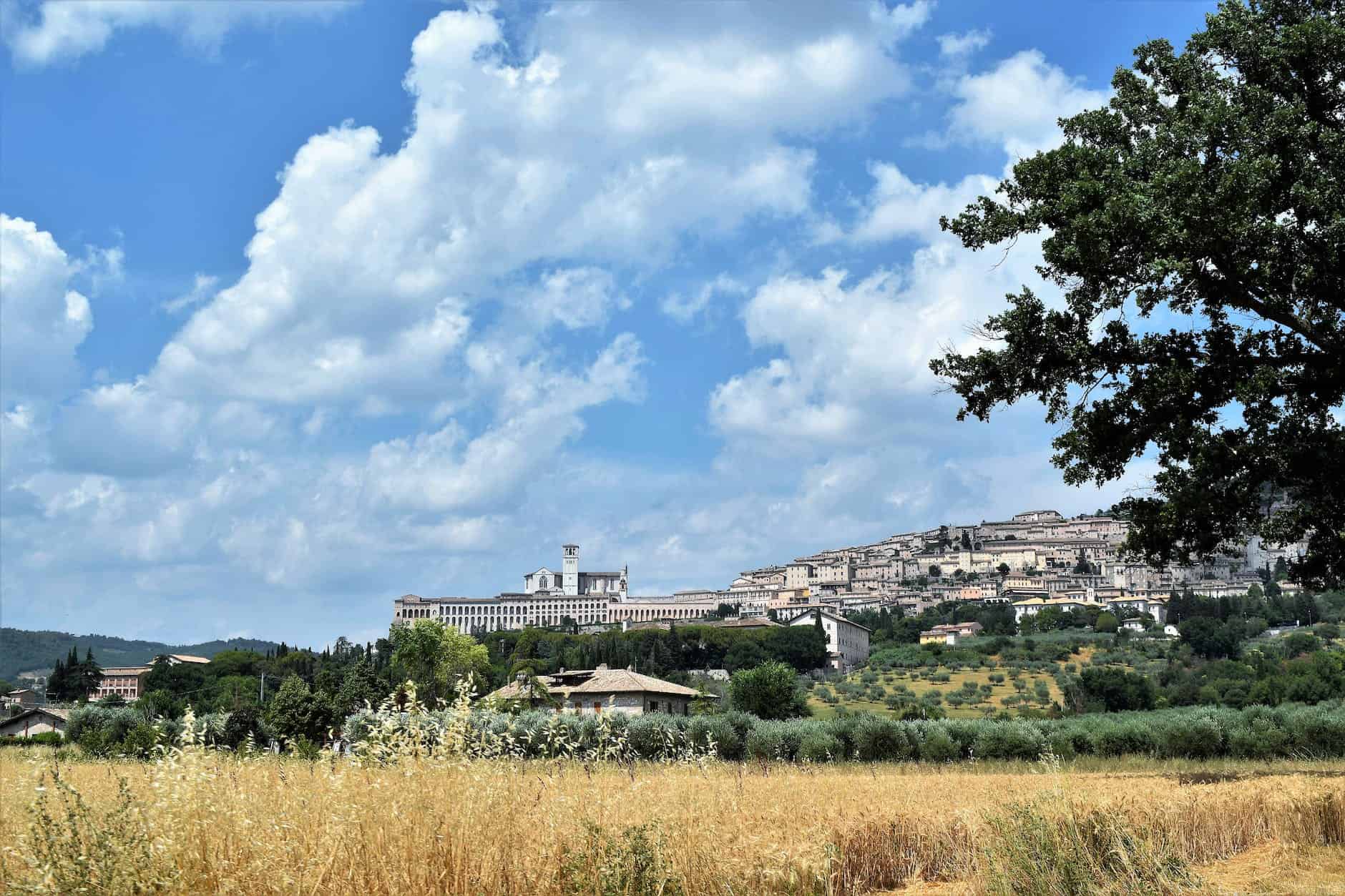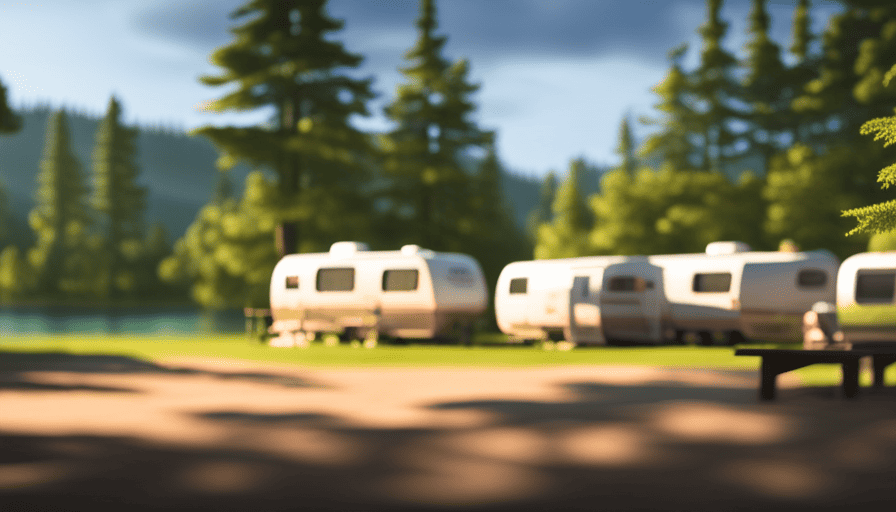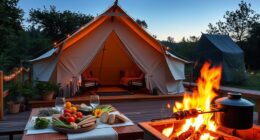Picture this: It’s an icy cold morning and you feel like a frozen ice cube. You’re nestled in your snug camper, yet the biting cold is creeping in. You urgently need to crank up the heat, but how do you begin?
Don’t fret, fellow campers, for we have the solution. In this article, we will guide you through the process of turning on the heat in your camper, ensuring you can enjoy warmth and comfort throughout your adventures.
First and foremost, locate the thermostat, that little device that holds the key to a toasty haven. Once found, ensure that your propane or electricity is connected, as without them, your heat will remain dormant. Set the thermostat to your desired temperature, allowing it to communicate your wishes to the furnace. Then, with a flick of a switch, turn on the furnace and patiently wait for it to start humming like a contented bee.
But that’s not all, my friends. We shall also delve into checking for proper airflow, using insulation or draft stoppers to retain heat, and even consider the use of space heaters for additional warmth. Lastly, we emphasize the importance of regularly maintaining and servicing your heating system to keep it running smoothly.
So, fellow travelers, let us embark on this knowledge-filled journey and conquer the cold!
Key Takeaways
- Locate the thermostat and ensure propane or electricity is connected
- Set the thermostat to desired temperature
- Turn on the furnace and wait for it to start
- Check for proper airflow and use insulation or draft stoppers
Locate the Thermostat
To turn on the heat in your camper, first, you gotta find that thermostat! The thermostat is a crucial component that controls the temperature inside your camper.
If you’re experiencing any trouble with your thermostat, it’s essential to troubleshoot and address the issues promptly. Begin by checking if the thermostat is receiving power and if the batteries are fresh.
Next, ensure that the thermostat is properly programmed for optimal comfort. Adjust the settings to your desired temperature and schedule, allowing the thermostat to automatically regulate the heat. If you encounter any difficulties while programming, refer to the manufacturer’s instructions or seek professional assistance.
Once the thermostat is functioning correctly, it’s time to ensure that the propane or electricity is connected. This step is vital to provide the necessary energy source for heating your camper. Check the propane tank or electrical connections to verify that they are securely attached and functioning correctly.
Now that the thermostat is set up correctly and the power source is connected, you’re ready to enjoy the cozy warmth inside your camper.
Ensure Propane or Electricity is Connected
First, make sure your propane or electricity is properly plugged in to produce a pleasant, toasty temperature in your trailer.
-
Check the propane tank gauge to ensure there’s enough fuel for the heating system to function optimally.
-
Inspect the propane lines for any signs of damage or leaks. Use a propane leak detector or soapy water to identify any leaks, and promptly repair them to ensure safety.
-
Verify that the propane supply valve is fully open to allow the fuel to flow to the heater.
-
If using electricity, check the power source and ensure it’s correctly connected. If you’re plugged into a power pedestal, confirm that the circuit breaker is on and supplying electricity to the camper.
-
In case of troubleshooting heating issues, check the furnace filter for dirt or debris buildup, which can restrict airflow and reduce heating efficiency. Clean or replace the filter as necessary.
Now that your propane or electricity is properly connected, it’s time to set the thermostat to the desired temperature.
Set the Thermostat to the Desired Temperature
Now that your propane or electricity is properly connected, it’s crucial to adjust the thermostat to your desired temperature for maximum comfort.
To set the thermostat settings, locate the thermostat control panel, which is usually mounted on a wall inside your camper. The control panel may have buttons or a dial for adjusting the temperature. Press the ‘+’ or ‘-‘ buttons to increase or decrease the temperature setting, or turn the dial clockwise or counterclockwise to adjust the temperature accordingly.
It is important to note that different thermostats may have different features and options, so refer to the manufacturer’s instructions for specific details on how to set your thermostat.
If you encounter any issues with the thermostat, there are a few troubleshooting steps you can try. First, ensure that the thermostat is receiving power by checking the circuit breaker or fuse box. If the power is on and the thermostat still isn’t working, try replacing the batteries if it’s battery-powered. Additionally, check that the wires connecting the thermostat to the furnace are securely connected and not damaged.
Now that you have set the thermostat to your desired temperature, it’s time to turn on the furnace.
Turn on the Furnace
Once you’ve adjusted the thermostat to your desired temperature, it’s time to activate the cozy warmth of the furnace in your camper.
The furnace is a vital component of your camper’s heating system, and it requires regular maintenance to ensure optimal performance. To keep your furnace running smoothly, it’s essential to discuss furnace maintenance. This includes checking and cleaning the furnace filter regularly to prevent dust and debris buildup, as well as inspecting the burner assembly for any signs of wear or damage.
Additionally, it’s crucial to troubleshoot furnace issues promptly. If you notice any unusual noises, weak airflow, or a lack of heat, it may indicate a problem with the furnace. In such cases, it’s advisable to consult the manufacturer’s manual or contact a professional for assistance.
With the furnace properly maintained, you can now wait for the furnace to start, filling your camper with the comforting warmth you desire.
Wait for the Furnace to Start
In the anticipation of the furnace roaring to life, you can almost feel the icy chill being crushed beneath the weight of its warming embrace. Once you’ve successfully turned on the furnace in your camper, it’s important to patiently wait for it to start. However, if you encounter any issues during this process, troubleshooting common furnace problems can help you identify and resolve the issue quickly.
First, check if the thermostat’s set to the desired temperature. Make sure it’s set higher than the current temperature inside the camper.
If the furnace still doesn’t start, check if the power supply’s connected properly. Sometimes, a loose connection can prevent the furnace from starting.
If the power supply’s fine, inspect the furnace for any visible signs of damage or blockage. Clean or repair any obstructions that you find.
If the furnace still fails to start, consider alternative heating options such as using electric space heaters or portable propane heaters. These alternatives can provide temporary heat until the furnace’s fixed or replaced.
Now, as we transition into the subsequent section about adjusting the thermostat as needed, let’s explore how to maintain the desired temperature in your camper.
Adjust the Thermostat as Needed
To keep things cozy inside, you’ll want to make sure the thermostat is adjusted to your desired temperature in your home on wheels. The thermostat is the key to controlling the heat output of your camper’s furnace. It allows you to set the temperature to your preference, ensuring that you stay warm and comfortable throughout your camping experience.
When adjusting the thermostat, there are a few things you should keep in mind. First, consider the insulation options in your camper. Good insulation can help retain heat and prevent it from escaping, making your furnace more efficient. If your camper lacks insulation, you may want to consider adding some to improve heat retention.
Second, it’s important to remember energy-saving tips when adjusting the thermostat. Lowering the temperature slightly can save energy and reduce your fuel consumption. Additionally, using a programmable thermostat can help you regulate the temperature more efficiently by automatically adjusting it based on your schedule.
By adjusting the thermostat to your desired temperature and considering insulation options and energy-saving tips, you can ensure a warm and comfortable environment inside your camper.
Now, let’s move on to the next step and check for proper airflow to maximize the effectiveness of your furnace.
Check for Proper Airflow
Make sure you have a comfortable and cozy environment inside your camper by checking for proper airflow in order to maximize the effectiveness of your furnace. Improving ventilation is crucial for distributing warm air evenly throughout the camper and preventing condensation buildup.
Here are three key factors to consider when assessing airflow:
-
Ventilation system: Ensure that all vents and ducts are clean and unobstructed. Dirty vents can restrict airflow and reduce the efficiency of your heating system. Regularly inspect and clean the vents to prevent any blockages.
-
Window placement: Properly positioning your windows can significantly enhance airflow. Open windows strategically to create a cross breeze that allows fresh air to circulate and stale air to escape. This circulation helps prevent condensation from forming on windows and walls.
-
Exterior vents: Check that the exterior vents, such as the furnace exhaust vent or air intake vents, are clear of debris. Blocked vents can hinder air intake or exhaust, leading to inadequate airflow and potential issues with the furnace.
To further improve heat retention, use insulation or draft stoppers to seal any gaps or cracks that may let cold air in. By ensuring proper airflow and sealing off any potential drafts, you can enhance the efficiency of your camper’s heating system and create a warm and cozy space.
Use Insulation or Draft Stoppers to Retain Heat
Now that we’ve checked for proper airflow in our camper, it’s time to focus on retaining the heat we generate. One effective way to do this is by using insulation or draft stoppers.
Insulation plays a crucial role in preventing heat loss by creating a barrier between the inside of the camper and the cold air outside. It helps maintain a comfortable temperature inside by reducing the transfer of heat through the walls, windows, and roof. By insulating these areas, we can significantly increase the efficiency of our heating system.
Another option is to use draft stoppers, which are specifically designed to block cold air from seeping into the camper. These can be placed at the bottom of doors and windows to prevent drafts and keep the warm air inside. Draft stoppers are simple yet effective tools that can make a noticeable difference in retaining heat.
When it comes to insulation benefits, it not only helps in keeping the camper warm but also reduces energy consumption, as the heating system doesn’t need to work as hard to maintain the desired temperature. Similarly, draft stoppers are highly effective in preventing cold air infiltration, ensuring the heat inside remains trapped.
By properly insulating and using draft stoppers, we can maximize the warmth in our camper and minimize heat loss. However, if we still need additional warmth, we can consider using space heaters as a supplementary heating option. These heaters can provide targeted warmth to specific areas, ensuring we stay comfortable in our camper.
Consider Using Space Heaters for Additional Warmth
Embrace the cozy embrace of a space heater, allowing its comforting warmth to envelop you on chilly nights in your mobile abode. Space heaters can be a great addition to your camper, providing additional warmth and comfort. However, it’s important to prioritize safety when using these devices.
Here are four key considerations to keep in mind:
-
Choose a space heater with safety features: Look for heaters that have tip-over protection, overheat protection, and a cool-touch exterior. These features can prevent accidents and ensure the safety of your camper.
-
Select the right size heater: Consider the size of your camper and the area you want to heat. A heater that’s too small may not provide sufficient warmth, while one that’s too large can be inefficient and consume excessive energy.
-
Follow proper usage guidelines: Always read and follow the manufacturer’s instructions for safe use. Keep the heater at least three feet away from flammable materials, such as curtains or bedding, and avoid using extension cords.
-
Regularly inspect and clean your heater: Prioritize maintenance by cleaning the heater regularly and checking for any loose or damaged parts. This’ll help ensure optimal performance and reduce the risk of malfunctions or accidents.
By following these space heater safety guidelines and choosing the right heater for your camper, you can enjoy a cozy and warm environment during your travels.
Now, let’s discuss how to regularly maintain and service the heating system to keep it in top condition.
Regularly Maintain and Service the Heating System
Regularly maintaining and servicing the heating system in our mobile abode is crucial for ensuring optimal performance and avoiding potential issues. By following a few simple steps, we can keep our camper’s heating system running smoothly during those chilly nights on the road.
First and foremost, regular maintenance is key. This includes inspecting and cleaning the furnace, as well as checking for any loose or damaged parts. It’s important to keep the heating system free from dust and debris, as these can hinder its performance and even cause it to overheat.
Additionally, we should check and replace the furnace filter as needed, as a clogged filter can reduce airflow and efficiency.
Troubleshooting tips can also come in handy when maintaining the heating system. If we notice any strange noises or smells coming from the furnace, it’s important to address them promptly. Checking the thermostat settings and ensuring they’re correctly calibrated can help troubleshoot any temperature control issues.
If the heating system still isn’t functioning properly, it may be necessary to seek professional assistance to diagnose and fix any underlying problems.
By regularly maintaining and troubleshooting our camper’s heating system, we can ensure that it provides us with the warmth and comfort we need during our travels. Don’t overlook the importance of proper care and attention to keep your heating system in top shape.
Frequently Asked Questions
How do I locate the thermostat in my camper?
To locate the thermostat in your camper, first, make sure to turn off the power supply. Then, remove the cover of the thermostat, which is usually located on the interior wall. Look for a box-shaped device with buttons or a digital display. This is the thermostat.
If you’re experiencing issues, troubleshooting the thermostat can be done by checking the wiring connections, ensuring proper power supply, and calibrating the temperature settings. Regular maintenance includes cleaning the thermostat and replacing batteries if necessary.
What should I do if my camper is not connected to propane or electricity?
If your camper isn’t connected to propane or electricity, you still have power source alternatives and heating options. One option is to use a portable generator to provide electricity for a space heater. Another option is to use a battery-powered heater, which can be a great backup option. Make sure to choose a heater that’s safe for indoor use and follow all safety precautions. Remember to always have a carbon monoxide detector in your camper for added safety.
Can I set the thermostat to any temperature I want?
Yes, you can set the thermostat to any temperature within its limits. The thermostat allows you to control the temperature in your camper by adjusting the desired temperature. However, if you encounter issues with the thermostat, there are troubleshooting steps you can take to resolve them. These may include checking the power source, replacing batteries, or recalibrating the thermostat. It’s important to follow the manufacturer’s instructions for troubleshooting thermostat issues.
Is there a specific way to turn on the furnace in my camper?
When it comes to turning on the furnace in your camper, there’s a specific way to do it. First, locate the thermostat, which is usually found on the wall near the main living area. Next, check the thermostat settings to make sure the temperature is set correctly. If the furnace still isn’t turning on, it might be time for some troubleshooting. Check the circuit breaker, gas supply, and thermostat batteries to make sure everything is functioning properly.
How long should I wait for the furnace to start after turning it on?
When troubleshooting a furnace, it’s important to consider common furnace problems that might cause a delay in starting. After turning on the furnace, wait for a few minutes to allow the system to ignite and warm up.
If the furnace doesn’t start within this time frame, check for issues such as a faulty thermostat, dirty air filters, or a malfunctioning igniter. By addressing these common problems, you can ensure efficient and timely heating in your camper.
Conclusion
In conclusion, turning on the heat in a camper is a simple yet crucial task for a comfortable and cozy experience. By following the steps outlined above, you can ensure that your camper is warm and inviting, even in the coldest of nights.
As you adjust the thermostat and feel the warmth spreading through the air, imagine the sensation of a soft blanket wrapped around you, providing a shield from the biting cold outside. With proper maintenance and the right precautions, your camper can become a haven of warmth and relaxation during your outdoor adventures.










